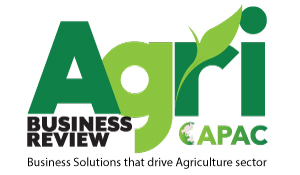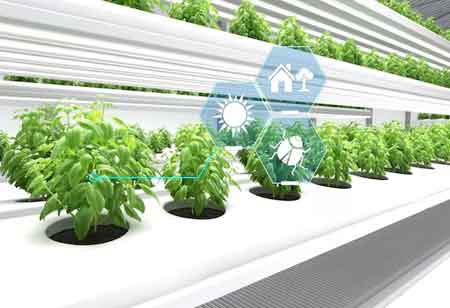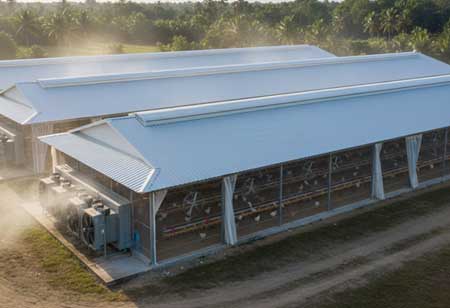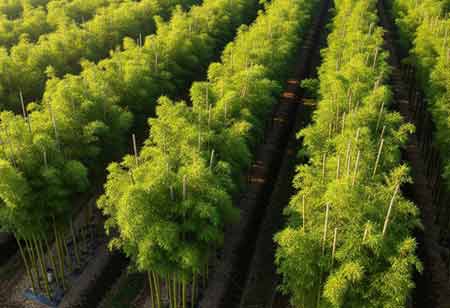Thank you for Subscribing to Agri Business Review Weekly Brief
Precision Farming Techniques for Crop Management
Precision farming technology has revolutionised the field of agriculture, offering innovative strategies for efficient crop management.
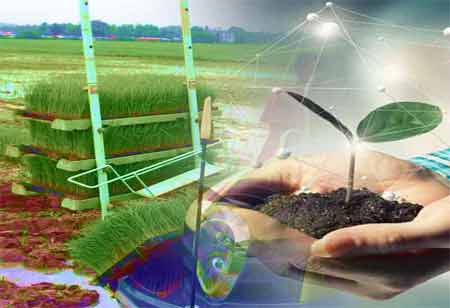
By
Agri Business Review | Monday, July 03, 2023
Stay ahead of the industry with exclusive feature stories on the top companies, expert insights and the latest news delivered straight to your inbox. Subscribe today.
By leveraging tools such as remote sensing, global positioning systems (GPS), and data analytics, precision farming enables farmers to make informed decisions, reduce resource wastage, and enhance overall productivity.
FREMONT, CA: Precision farming technology has revolutionised the field of agriculture, offering innovative strategies for efficient crop management. By leveraging state-of-the-art technologies and data-driven methodologies, precision farming enhances productivity, minimises environmental impact, and optimises resource utilisation. This modern approach to agriculture utilises a range of advanced instruments, including remote sensing, GPS, drones, and machine learning algorithms, to monitor and analyse various factors influencing crop health such as soil conditions, weather patterns, and insect infestations. As a result, farmers can now make informed decisions, boost yields, reduce expenses, and access real-time data for tailored interventions. The advent of precision farming has truly transformed the agricultural landscape, empowering farmers with unprecedented capabilities to achieve sustainable and efficient farming practices.
Remote Sensing and Imaging: Remote sensing techniques involve the use of satellites, drones, and sensors to collect data on various aspects of crop health and environmental conditions. Remote sensing can provide valuable information about soil moisture levels, nutrient content, pest infestations, and crop stress. By analysing this data, farmers can precisely identify problem areas and take targeted actions, such as adjusting irrigation schedules, applying fertilisers or pesticides only where needed, and preventing disease outbreaks.
Variable Rate Technology (VRT): Variable Rate Technology is an essential component of precision farming, enabling farmers to apply inputs, such as fertilisers, herbicides, and irrigation water, at variable rates across their fields. VRT systems utilise data from soil mapping, remote sensing, and yield monitoring to create prescription maps that guide automated equipment. This allows farmers to apply inputs according to the specific needs of different areas within a field, optimising resource utilisation, reducing costs, and minimising environmental impacts.
GPS Guidance Systems: Global Positioning System (GPS) technology is widely used in precision farming for accurate field mapping, equipment guidance, and record keeping. GPS-enabled equipment, such as tractors and harvesters, can precisely navigate fields and apply inputs based on pre-defined maps or real-time data. This eliminates overlapping and ensures consistent coverage, reducing input wastage and improving efficiency. Additionally, GPS data can be used for yield monitoring and creating yield maps, providing insights into crop performance and identifying areas for improvement.
Automated Irrigation Systems: Precision farming techniques offer significant advancements in irrigation management. Automated systems equipped with soil moisture sensors and weather data can regulate water application according to crop requirements, preventing over- or under-irrigation. Additionally, this minimises the likelihood of waterlogging and drought stress as well as optimising nutrient uptake. By precisely managing irrigation, farmers can enhance crop health, reduce water consumption, and achieve higher yields.
Data Analytics and Decision Support Systems: The vast amount of data generated through precision farming techniques can be analysed using advanced analytics and decision support systems. By integrating data from multiple sources, farmers can gain valuable insights into crop performance, identify patterns, and make data-driven decisions. Predictive models can help optimise planting schedules, predict disease outbreaks, and manage crop rotations more effectively. Data-driven decision-making enables farmers to identify bottlenecks, adjust management practices, and maximise productivity while minimising risks.
Precision farming techniques offer immense potential for improving crop management practices. By leveraging technologies such as remote sensing, VRT, GPS guidance systems, automated irrigation, and data analytics, farmers can optimise resource utilisation, reduce environmental impacts, and increase crop yields. These techniques enable farmers to make informed decisions based on real-time data, leading to more sustainable and efficient agricultural practices. As precision farming continues to advance, it holds great promise for the future of agriculture in ensuring food security and environmental stewardship
